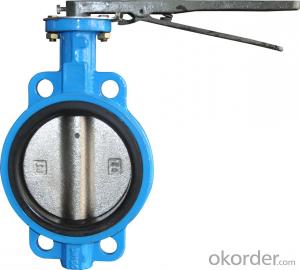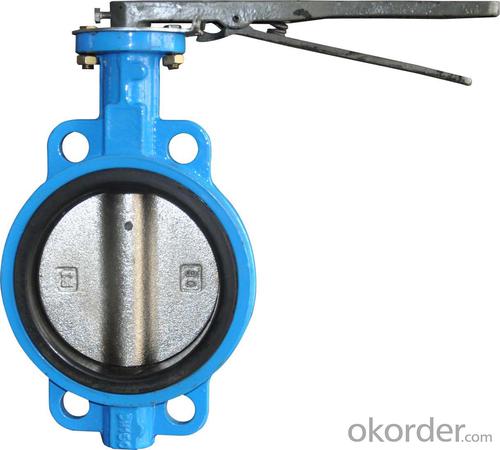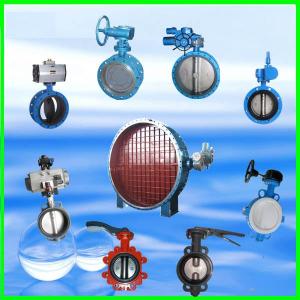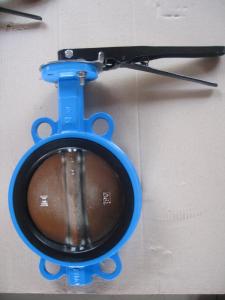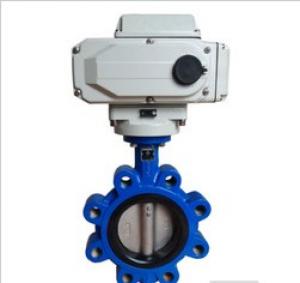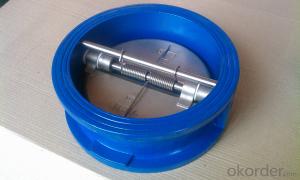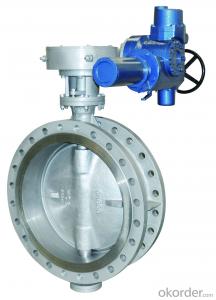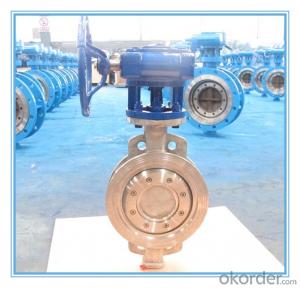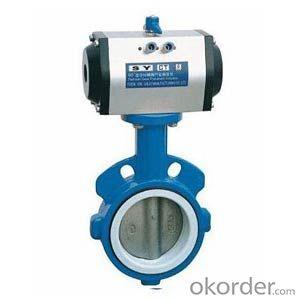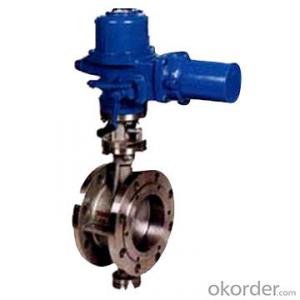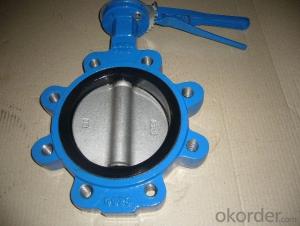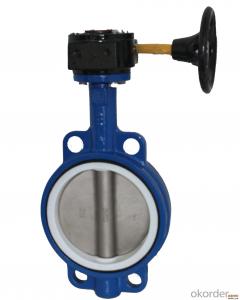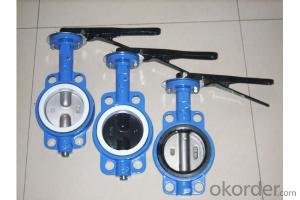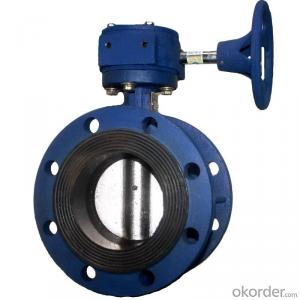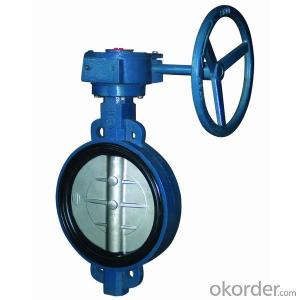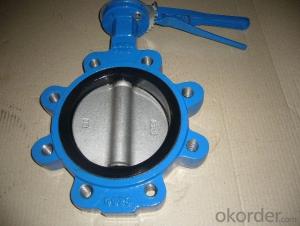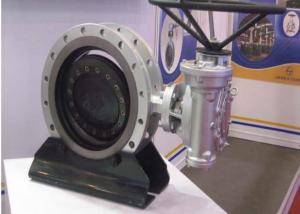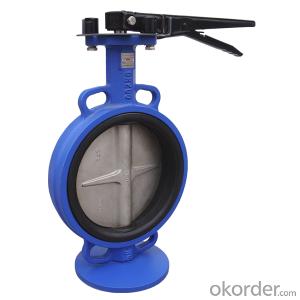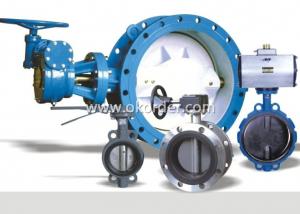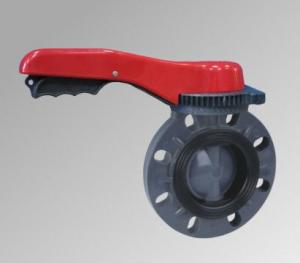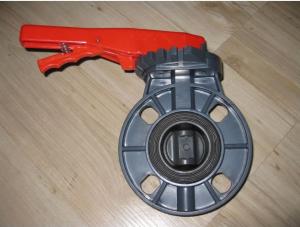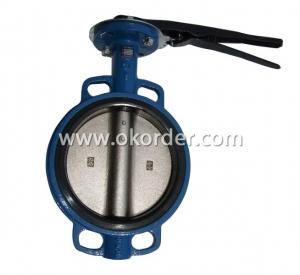Ductile Iron wafer butterfly valves DN250
- Loading Port:
- Tianjin
- Payment Terms:
- TT OR LC
- Min Order Qty:
- 100 set
- Supply Capability:
- 80000 set/month
OKorder Service Pledge
OKorder Financial Service
You Might Also Like
A butterfly valve consists of body ,stem ,disc , actuator (manual actuator, worm-gear actuator , aerodynamic actuator or electric actuator) , and wafer type butterfly valve can implement the process for turning on turning off and regulating the flow by the circumrotation of stem and disc that is droved by actuators.
1.Simple and compact construction. Small in size and light in weight. Easy transportation, installation and maintenance.
2. Quick 90 degrees on-off operation. Minimized operating torque ,energy saving.
3. Excellent sealing performance with no leakage. Long service life.
4. Wide selection of materials ,applicable for various media..
5. Flow curve tending to straight line. Excellent regulation performance.
- Q: What's the use of fire butterfly valve?
- You should ask the signal butterfly valve, butterfly valve in the fire signal system which is a monitoring alarm signal, its purpose is to ensure that the valve has been opened in the daily state, to prevent misuse operation was closed, thus affecting when accidental fire extinguishing. Therefore, it is necessary to set up the signal valve!
- Q: Today saw the butterfly valve and butterfly valve, I do not know what is the difference between the two
- It should be the same. Butterfly valve (also called butterfly) English Name: butterfly valve: headstock disc disc disc plate and can rotate around the axis of the valve body of a valve rotating. Construction: mainly composed of valve body, valve stem, disc and sealing ring. The valve body is cylindrical and has short axial length and is internally provided with a plate.
- Q: Butterfly valve common faults and treatment methods?
- Three, summary:Only familiar with every detail of circulating water pump outlet valve and butterfly valve equipment, timely and thorough maintenance and strict debugging, to ensure the safety and reliability of equipment operation, to ensure the healthy and orderly operation of equipment.
- Q: How do you draw the butterfly valve in the engineering drawing?
- Butterfly valve there are many kinds of painting, mainly designed to draw on the staff, according to the design institute out of the icon.
- Q: What is the medium flow rate when the centerline butterfly valve is fully open?
- On the pipeline, mainly from cutting and throttling. Butterfly valve headstock is a disc shaped disc, in the valve body around its own axis of rotation, so as to achieve the purpose of opening or closing or regulation.
- Q: I have a 1993 Oldsmobile Cutlass Supreme and I think I have the case of the blow-by. The engine had high mileage, but was rebuilt b/c it stalled while driving. 3.1L V6 gasoline engine. The fuel filter and the fuel pump are brand new. Now we have the same problem a few months later. It stalls while driving. Its been sitting a while and won't start by itself, so I pulled off the air intake hose off of the air filter to spray starting fluid into it. I noticed oil puddled in the air intake hose, so I looked for the PCV valve on the rocker cover. There is a tube going from the air-intake hose to the rocker cover. I popped out the tube from the rocker cover and there is no PCV valve. Just tube. Is that where the PCV valve is supposed to go? If not, where can I find it on the engine? And could that possibly fix the blow-by and the stalling engine? I'd appreciate any help. Thanks in advance.
- pcv valve is on the valve cover closest to the firewall.it is attached to a rubber hose that runs to the intake. right below an electrical plug
- Q: What does the butterfly valve D361H - 25C DN350 mean?
- Welded turbine butterfly valve, hard seal, material: cast steel, pressure 25KG, caliber 350MM
- Q: Function of signal butterfly valve in fire sprinkler system
- The signal butterfly valve is generally installed in two parts: floor level, dry pipe, flow indicator front end, trunk pipe, wet alarm valve, front end.Floor level pipe installation is a function of the signal valve, when the floor spraying system needs repair, close the valve, open the end of the floor drain, emptying the water in the spray system, maintenance; two is the sprinkler system is not allowed inside water, when the butterfly is closed, will transmit a signal to the the fire alarm system, fire alarm system receives a monitoring signal (so called signal butterfly valve), fire sprinkler system that the floor is anhydrous state, fast repair.Wet alarm valve at the front of the signal butterfly valve with the main floor of the main role of the butterfly valve, first, maintenance, and two is the prompt sprinkler system, there is a signal butterfly valve closed, should be repaired as soon as possible.
- Q: How does PLC control butterfly valves?
- PLC control butterfly valve, usually control pneumatic butterfly valve or electric butterfly valve.PLC control pneumatic butterfly valve, that is, PLC program control, electric control, gas control, gas control butterfly valve;PLC control electric butterfly valve, that is, PLC program control electric, electric control butterfly valve.Control requirement:All PLC output contacts must be isolated from the intermediate relay and indirectly controlled by an intermediate relay.
- Q: The difference between vertical and horizontal butterfly valves in municipal water supply
- The general municipal water supply butterfly valve is mainly vertical installation, mainly due to underground pipe network, vertical drive device in the upper, easy to operate, and installation of smaller wells;Horizontal, usually large diameter butterfly valve, usually used in the main network, often open, not easy to collect slag.
Send your message to us
Ductile Iron wafer butterfly valves DN250
- Loading Port:
- Tianjin
- Payment Terms:
- TT OR LC
- Min Order Qty:
- 100 set
- Supply Capability:
- 80000 set/month
OKorder Service Pledge
OKorder Financial Service
Similar products
Hot products
Hot Searches
Related keywords
